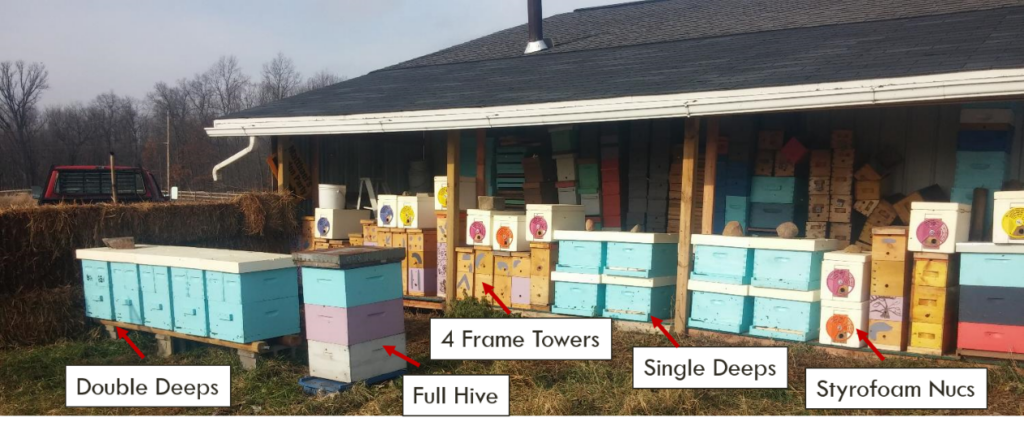Project Overview
Annual Reports
Commodities
- Animals: bees
Practices
- Animal Production: animal protection and health
Summary:
AnnualReport_year1
Summary
One of the biggest issues facing beekeepers is the high rate of winter loss. Currently, beekeepers lose 30-65% of their colonies each winter. Beekeepers generally replace these colonies lost in winter by purchasing packages of bees in the spring. Package prices have gone up considerably, making this system financially unsustainable to many beekeeping operations. This project presents an alternative to the expensive and unsustainable practice of purchasing package bees to replace annual colony winter losses using small nucleus colonies (nucs) that are made up in the late summer. The success of this strategy depends on the ability of these nucs to overwinter. I am examining the key variables that affect overwintering nucs, to develop a detailed system that can be expanded and used by other beekeepers.

Project objectives:
Objectives/Performance Targets
This study will examine the effect of key variables on colony survival: minimum cluster size, type of equipment, and timing that the nuc is made. The goal is to identify successful options for wintering smaller colonies, and to determine a system of using a large colony to produce many smaller colonies that can be used to replace winter losses or apiary expansion. In the spring, we will examine the differences in survival, identifying colonies that perished, colonies that survived but were weak, and colonies that came through the winter strong. Colonies were housed in 5 different equipment types, and cluster size and basic data were recorded. The objective for year 2 will be to determine differences in timing, and to do more detailed studies in the best equipment types.